|
 ToolKit Disc
ToolKit Disc
4.09.2004 | Lunnoe foto dnya
The granddaddy of software for lunar studies is Harry Jamieson's Lunar Observer's Toolkit (LOT), which was first written in 1985. Some observers have been using this program for years, but I haven't because I use a Macintosh and it is a Windows program.
 Snake in the Mare
Snake in the Mare
3.09.2004 | Lunnoe foto dnya
The high resolution Apollo Hasselblad Camera views of the mare are absolutely spectacular near the terminator. Here we see the southwestern end of the peculiar linear mountain range that parallels the sloping northern edge of the Aristarchus Plateau.
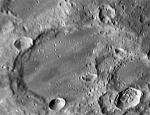 Ray-Swept Stofler
Ray-Swept Stofler
2.09.2004 | Lunnoe foto dnya
Three-hundred fifty km east of Tycho is a crater which has seen some tough days. Stofler once was a 126 km wide Copernicus-like crater, probably about 4.5 km deep. Its still that wide...
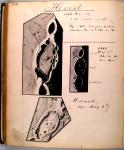 Hundred Year Old Hevelius
Hundred Year Old Hevelius
1.09.2004 | Lunnoe foto dnya
With our multi-hundred dollar eyepieces, goto telescopes, electronic cameras and clever software we see and record the Moon better than ever before. Oh yeah? Compare the top left drawing of Hevel (the name before latinization gentrified it to Hevelius), made in 1896 by one Capt. Molesworth, with your own observations.
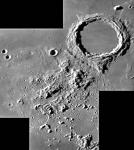 Archimedes and his Mountains
Archimedes and his Mountains
31.08.2004 | Lunnoe foto dnya
Archimedes is the largest crater inside the Imbrium Basin (Sinus Iridum is bigger but its on the rim rather than inside). But I don't think it is observed much because its floor lacks a central peak and its small pits, unlike Plato's, haven't become known as a test for seeing and optics.
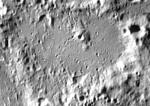 Are Central Peaks Volcanoes?
Are Central Peaks Volcanoes?
30.08.2004 | Lunnoe foto dnya
Although Ralph Baldwin in his 1949 book, The Face of the Moon, solved the problem of the origin of lunar craters, there continued to be a number of mostly European observers who vociferously argued that craters were volcanoes.
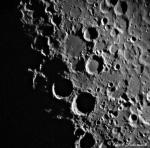 X Marks the Spot
X Marks the Spot
29.08.2004 | Lunnoe foto dnya
Cruising the terminator is how to see the most dramatic Moon views. Usually they are on the lit side, but it is always exciting to see a lone tall peak catching the morning rays before the surrounding terrain has become illuminated.
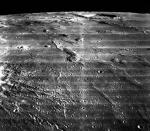 Volcanic Hills in the Ocean of Storms
Volcanic Hills in the Ocean of Storms
28.08.2004 | Lunnoe foto dnya
The Moon is the only object in the universe where we can compare kilometer scale details from telescope views with evocative orbital oblique perspectives. From Earthly telescopes we see a field of hills and bumps west of the crater Marius.
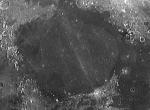 Serenitatis in Black and White and Gray
Serenitatis in Black and White and Gray
27.08.2004 | Lunnoe foto dnya
As sunrise creeps across the lunar surface, all telescopes are glued to that magic zone of long shadows and subtle topography. Thus each spot on the Moon is only observed for the day of sunrise and a few days following, and then ignored until the next lunation (who really observes the sunset terminator?).
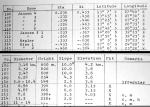 A Lost 40 Year Old Dome Catalog
A Lost 40 Year Old Dome Catalog
26.08.2004 | Lunnoe foto dnya
While visiting the Wolbach Library of the Harvard-Smithsonian Center for Astrophysics in Boston just before the Venus transit I discovered a comprehensive study of domes written in 1964. It is a master of science thesis by David L. Brungart, a student at the Air Force Institute of Technology at Wright-Patterson Air Force Base in Ohio.

